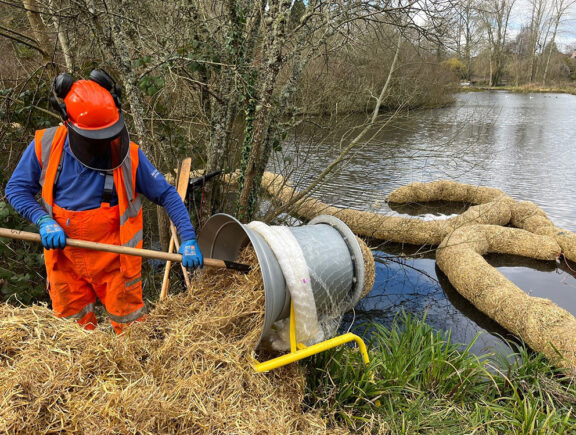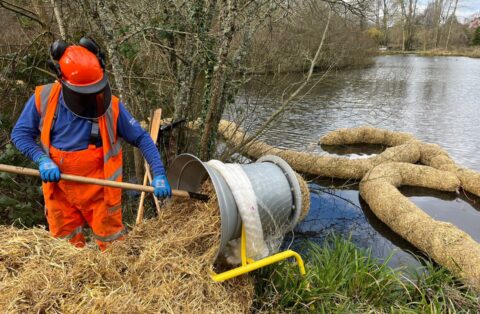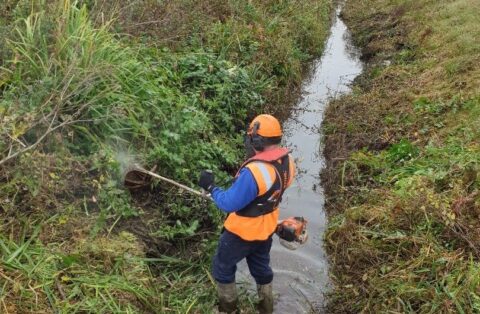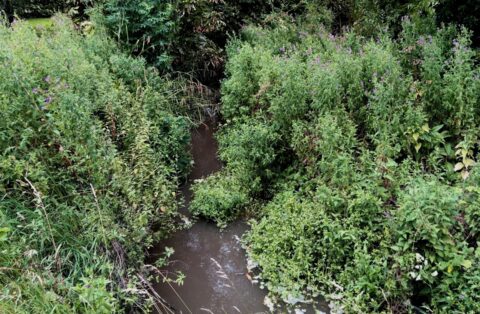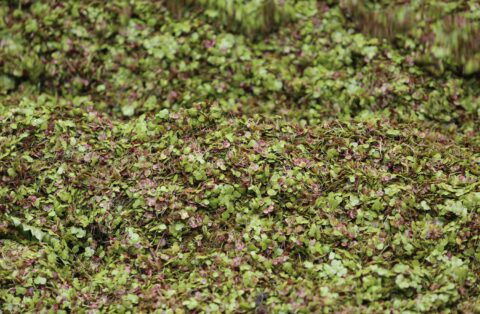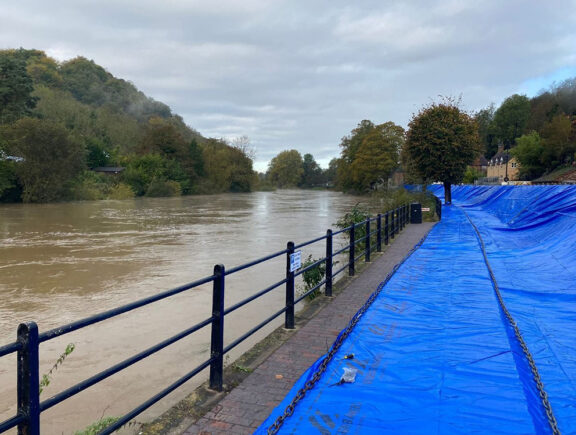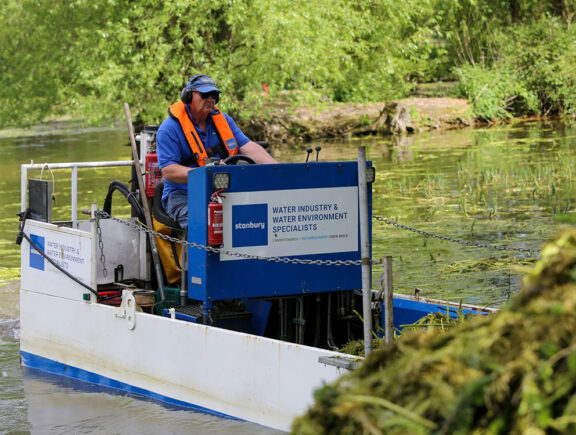Stonbury apply practical control measures to remove aquatic species and those that commonly encroach along riverbanks. Plants are removed at suitable intervals within the growing season – before they flower and set seed – to stop them spreading downstream. The team is equipped to deal with a broad range of species and most regularly address:
- Himalayan balsam (Impatiens glandulifera)
- Floating pennywort (Hydrocotyle ranunculoides)
- Japanese knotweed (Reynoutria japonica syn. Fallopia japonica)
- Giant hogweed (Heracleum mantegazzianum)
Trained in water safety and employing extensive knowledge along with a range of specialist equipment, the Stonbury team tailor control methods to the species and environment to ensure the most effective elimination and protection of the surrounding native flora.
Manual control
- Weed pulling by hand for larger weeds within SSSIs to avoid disturbance to other species
- Weed harvester boat for submerged and floating weeds within large ponds
- Amphibious Truxor machine for reeds and other weeds within shallow ponds
- Mowers, strimmers and cutters accompanied with weed nets on riverbanks
- Rakes, razors and cutters accompanied with weed nets within watercourses
Chemical control
- Hand-held spraying for non-submerged species to reduce disturbance to channel beds and banks
- Stem injection for tough-to-remove species, eliminating spray drift in sensitive areas and allowing removal during poor weather conditions
Environmental or biological control
- Azolla weevils for water fern (Azolla filiculoides) dominance
- UV dyes and barely straw to reduce the effects of excess algal growth in ponds and lakes
